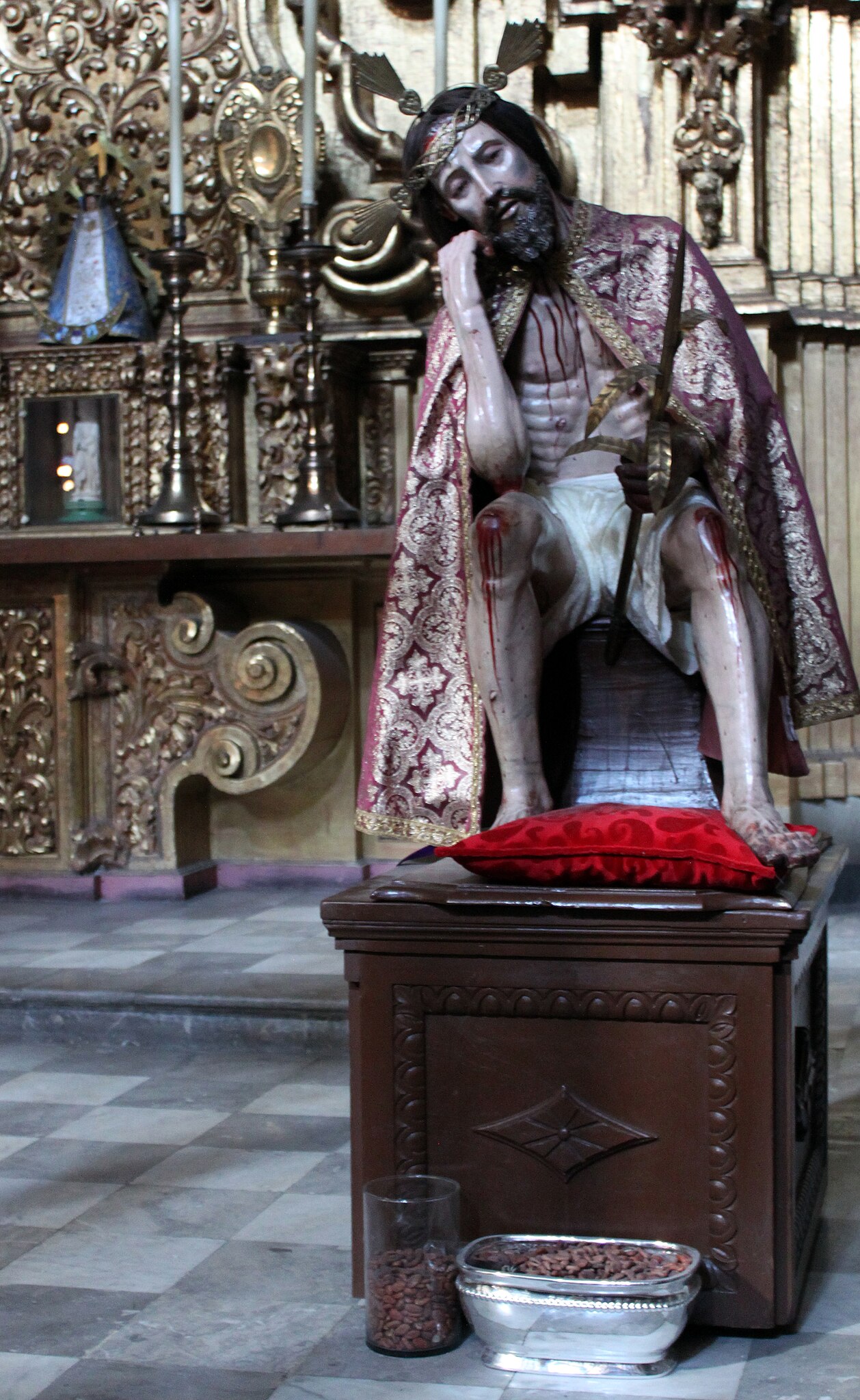
Step from the glare of the Zócalo into the cool half-light of Mexico City’s Metropolitan Cathedral, and you cross more than a threshold you cross into centuries of faith and flavour.
The bustle of street vendors fades; the air grows still, scented with incense and candle wax.
Shadows move softly across carved stone, and in one quiet side chapel, your eyes meet something unexpected.
Not a saint with a scroll, nor a martyr with a sword It’s Christ holding a branch of cacao.
They call him El Señor del Cacao.
And in that moment, you feel it scripture written in seed form.
Cacao as Currency, Offering, and Cosmology
Long before galleons carried it across oceans, cacao pulsed at the centre of Mesoamerican life divine in origin, tangible in value.
To the Maya, it was a gift from the gods, born from the blood of creation.
To the Aztecs, it was both coin and communion its bitterness a reminder of life’s depth, its foam a froth of celebration.
| Item | Value in Cacao Beans |
|---|---|
| A ripe tomato | 1 bean |
| A plump rabbit | 30 beans |
| A courtesan’s company | 80 beans |
| A wife | 100 beans |
| A human life in bondage | 200 Beans |
Cacao paid taxes, sealed marriages, and crossed the veil in offerings to the gods.
A seed that could buy a meal or carry a prayer.
From Devotion to Syncretism
When Spanish missionaries arrived, they brought saints and sacraments.
Yet not every native devotion was erased some were grafted, root to branch, into Christian iconography.
That is how, in the 16th century, a statue of Christ came to hold cacao as a testament.
A quiet fusion: theology entwined with terroir, faith carried in flavour.
A reminder that the divine could be tasted, traded, roasted, and poured.
Even today, pilgrims step softly between pews and leave cacao beans at his feet.
Not coins or candles, but beans humble, mottled, and warm from their journey in human hands.
The Terroir of Spirit
We speak often of terroir in chocolate the soil’s minerals, the altitude’s air, the pattern of wet and dry seasons.
But there is another terroir, less measured yet deeply felt:
The hands planting seedlings with quiet intention
The ancestors whose stories linger among the rows of trees
The whispered prayers between harvest and roast, carried on the smoke of wood fires
To taste cacao without knowing this is to see stained glass without ever stepping inside the cathedral.
Tasting the Sacred
So next time you unwrap a square of Mexican-origin chocolate, let it rest on your tongue, feel the bitterness bloom like incense in a small chapel.
Taste the warm notes of cinnamon or ancho pepper rising like memory, let the deep, dark base anchor you to the earth it came from.
Because in that moment, you are tasting more than cocoa solids and sugar.
You are tasting a seed that:
Once held the weight of currency in the markets of an empire
Has been placed at the feet of Christ for over four centuries
Carries within it the mingled bloodlines of faith, survival, and resistance
Chef’s Note
El Señor del Cacao can still be seen today inside Mexico City’s Metropolitan Cathedral a powerful fusion of Indigenous reverence and imported faith.
A reminder that the story of chocolate began not in factories, but in temples and fields.
Share & Explore
If this story stirred something in you, let it travel, share it with a friend who understands that food is never merely food.
And if you ever find yourself in Mexico City, step inside the cathedral l et the incense wrap around you.
Seek out El Señor del Cacao He is still there, waiting to bless the faithful, still holding the branch.
Semente Sagrada, História Eterna.
Image Credit
El Señor del Cacao, Metropolitan Cathedral, Mexico City (Anagoria, 2013)
Image on Wikimedia Commons
Licence: CC BY 3.0
